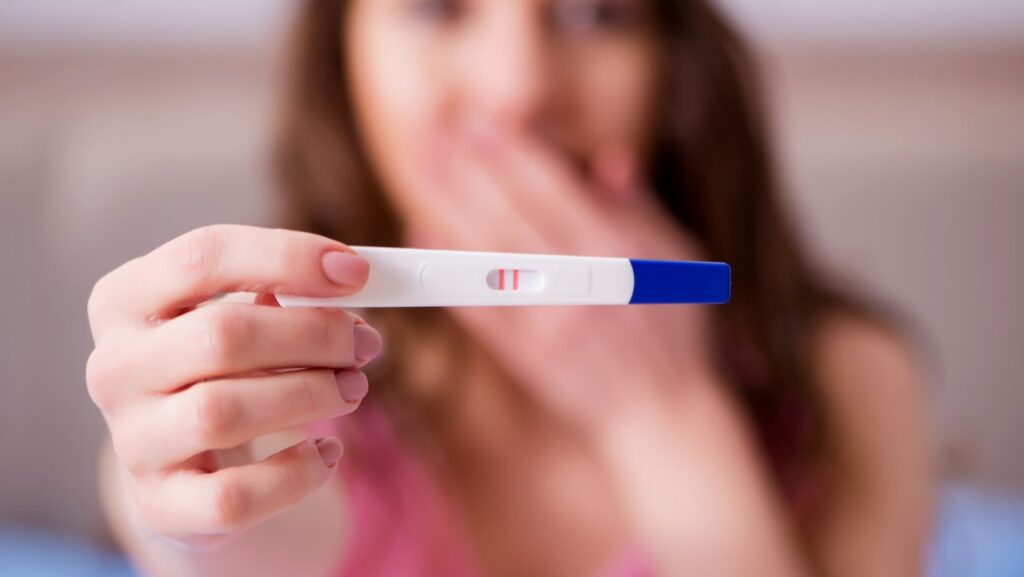When expecting a baby, seeing those double lines on a pregnancy test can be a moment of pure joy and anticipation. However, if the test line doesn’t seem to be getting darker as expected, it can lead to confusion and concern for many women. Understanding the reasons behind this phenomenon is crucial for expecting mothers.
A faint test line could be due to various factors, such as the time of day the test is taken, the sensitivity of the test, or the concentration of the urine sample. It’s essential for women to stay informed about what influences the darkness of the test line to alleviate unnecessary worry and uncertainty during this critical time.
Pregnancy Test Line Not Getting Darker
How Pregnancy Tests Work
Pregnancy tests work by detecting the hormone human chorionic gonadotropin (hCG) in a woman’s urine. This hormone is produced during pregnancy and is the key indicator used by tests to determine pregnancy. When a woman is pregnant, hCG levels increase rapidly, leading to a detectable result on a pregnancy test.
Reading the Test Results Correctly

It’s crucial to read pregnancy test results within the specified time frame mentioned in the test instructions. Waiting too long can lead to inaccurate results. A positive result typically shows up as a distinct line or symbol. If the test line appears lighter than the control line or seems to be getting lighter instead of darker over time, it can be concerning for some women.
Stay tuned for the next sections addressing potential reasons for a pregnancy test line not getting darker and how to interpret these results for a better understanding of this common concern among expectant mothers.
Reasons for a Light Test Line
Low hCG Levels
Instances where the pregnancy test line is faint could be due to low levels of hCG, the hormone detected in pregnancy tests. Low hCG levels early in pregnancy can result in a lighter test line. It’s essential to consider that hCG levels vary among pregnant individuals, and some may naturally have lower levels than others. In such cases, retesting after a few days can provide a clearer result as hCG levels typically double every 48 to 72 hours during the early stages of pregnancy.
The Hook Effect
The Hook Effect is another reason for a light test line on a pregnancy test. This phenomenon occurs when there is an excess of hCG in the urine sample, causing the test line to appear lighter or even invisible. Diluting the urine sample or using a different type of pregnancy test that can handle high hCG levels can help overcome the Hook Effect and provide a more accurate result.
Variability in Test Sensitivity

Variability in test sensitivity can also contribute to a faint test line. Some pregnancy tests are more sensitive to hCG levels than others, leading to variations in the darkness of the test line. Using a highly sensitive test can detect lower hCG concentrations earlier in pregnancy, resulting in a darker test line. When facing a light test line, using a test with higher sensitivity can provide a clearer indication of pregnancy.
Line Darkness Over Time
Progression Patterns
Understanding the progression patterns of a pregnancy test line can help individuals interpret the results accurately. In most cases, the test line should gradually darken over a few days as hCG levels increase. However, the rate at which the line darkens can vary among different pregnancy tests. Some tests may show a more pronounced darkening over a shorter period, while others may exhibit a slower progression.
When to Expect Darkening
It’s essential to know when to expect the test line to darken to avoid unnecessary worries or misinterpretations. Typically, the test line should gradually become darker within a few days after the initial test. If the line does not appear to darken, individuals are advised to wait a couple of days before retesting. Additionally, consulting a healthcare provider for further guidance can provide reassurance and clarification on the test results.
